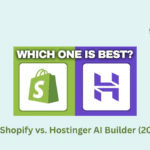The modern e-commerce landscape demands more than just a beautiful storefront. As a business moves from startup to high-growth Shopify store, the bottlenecks shift from design to operations, international logistics, and conversion rate optimization (CRO).
While everyone knows about the App Store and basic themes, the true scalability of Shopify lies in its powerful, often overlooked, advanced features. Here are the five hidden Shopify features that elite merchants are leveraging to drive massive growth in 2026, features that are now non-negotiable for serious scaling.
1. Shopify Functions: The New Checkout Powerhouse (No More Scripts)
Beyond Basic Discounts: Custom Checkout Logic for Higher AOV
For years, Shopify Scripts were the go-to for customizing the checkout experience (e.g., dynamic shipping rates or complex discount rules). However, in 2026, the real power lies with Shopify Functions.
What it is: Shopify Functions is the new, more powerful, and faster successor to the old Ruby-based Scripts. It allows developers to write custom business logic that runs natively on Shopify’s lightning-fast infrastructure.
Why it’s a hidden gem for growth:
- Performance: Functions execute code up to 57% faster than Scripts, ensuring your checkout never slows down, even during massive flash sales (critical for CRO).
- Advanced Logic: High-growth stores use this for custom product bundles that apply complex discounts, specialized shipping restrictions based on customer tags or cart value, and unique payment method visibility—all managed with superior security and performance.
- Accessibility: Unlike Scripts, many functions can be configured through apps, meaning you don’t always need a developer for every tiny change. This streamlines operational efficiency.
2. Shopify Flow: Automation Beyond Simple Tagging
Automated Back-Office Workflows to Reclaim Your Team’s Time
Shopify Flow, the no-code automation tool, is often used for basic tasks like “tag VIP customers.” High-growth merchants, however, use it as a full-fledged automation operating system for their back office.
What it is: A powerful, visual tool that automates complex, multi-step tasks using a simple Trigger, Condition, Action logic.
Why it’s a hidden gem for growth:
- Inventory & Fulfillment: Automatically hide out-of-stock products, notify your procurement team when inventory drops below the 3-week threshold, and instantly tag high-risk orders for manual review, preventing fraud loss.
- Customer Loyalty and Retention: Trigger a “handwritten” note or high-value personalized discount code to a customer exactly 30 days after their second purchase. Segment and sync customers to your email platform based on Lifetime Value (LTV) tiers, not just basic spending.
- Scalability: When you run thousands of orders a month, automating these routine decisions prevents manual errors, saves hundreds of person-hours, and keeps your team focused on strategic growth, not repetitive data entry.
3. Shopify Markets Pro: The Global Selling Accelerator
Simplifying International Sales and Eliminating Cross-Border Friction
Scaling a brand globally used to mean dealing with multiple tax registrations, customs forms, and fluctuating exchange rates. Shopify Markets Pro changes that.
What it is: An optional, premium tier of Shopify Markets that makes Shopify the Merchant of Record for international sales.
Why it’s a hidden gem for growth:
- Duty and Tax Clarity: It calculates, collects, and remits duties and import taxes at checkout. This provides customers with a guaranteed final price, drastically reducing cart abandonment and eliminating costly “surprise” fees upon delivery.
- Guaranteed Exchange Rates: Markets Pro locks in the foreign currency exchange rate for a set period, protecting your margins from volatile market fluctuations.
- Local Payment Methods: It unlocks critical local payment methods for specific regions (like Klarna or region-specific bank transfers), which can boost conversion in those markets by up to 40%. For any store ready to go global, this single feature is an operational game-changer.
4. Metafields & Dynamic Sources: The Data Backbone
Customizing Product Data Without Touching Theme Code
The default product page fields (title, description, price) are limiting. Metafields allow you to create and store additional, custom data points for your products, variants, customers, and more.
What it is: Custom data fields that allow you to extend the Shopify data model beyond the basics. Dynamic Sources allow you to pull this custom data directly into your theme sections.
Why it’s a hidden gem for growth:
- Ultimate Customization: Need to display a unique “Material Composition” chart, a “Sustainability Rating,” or a downloadable “User Manual” on a specific set of products? Metafields allow you to do this without hardcoding every page.
- SEO & Experience: This custom data can be used to generate rich snippet structured data, improving your product’s visibility in search results. It also improves customer experience by providing granular, niche information specific to your products.
- Operational Efficiency: Managing all product-specific details in one place (the Metafield section) is far cleaner and more efficient than using confusing product tags or third-party apps.
5. Product Recommendations API: Built-in AI Merchandising
Leveraging Shopify’s Machine Learning for Smart Upsells
While many stores rely on expensive third-party apps for recommendations, Shopify has a powerful, built-in system that is both free and lightning-fast.
What it is: The native API uses Shopify’s own machine learning models, trained on billions of e-commerce transactions, to suggest complementary products based on what other customers bought.
Why it’s a hidden gem for growth:
- Speed and Zero Cost: It runs natively, which means zero load time impact and zero monthly fees for a core feature that directly impacts your Average Order Value (AOV).
- Contextual Relevance: The recommendations are highly relevant because they are based on true purchase history across the entire platform, making them highly effective for conversion.
- Location: High-growth merchants use the API to place intelligent “You May Also Like” blocks not just on the product page, but on the cart page and even in the checkout funnel, making strategic, last-minute upsells.



